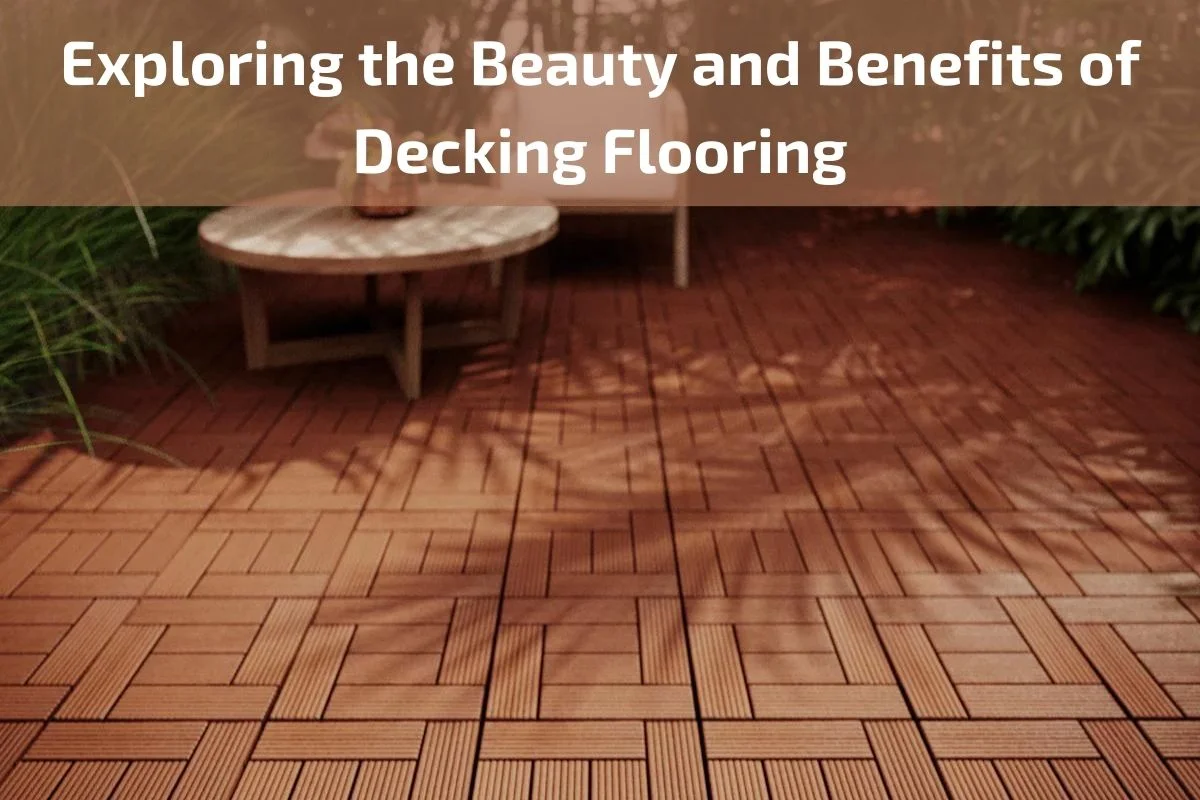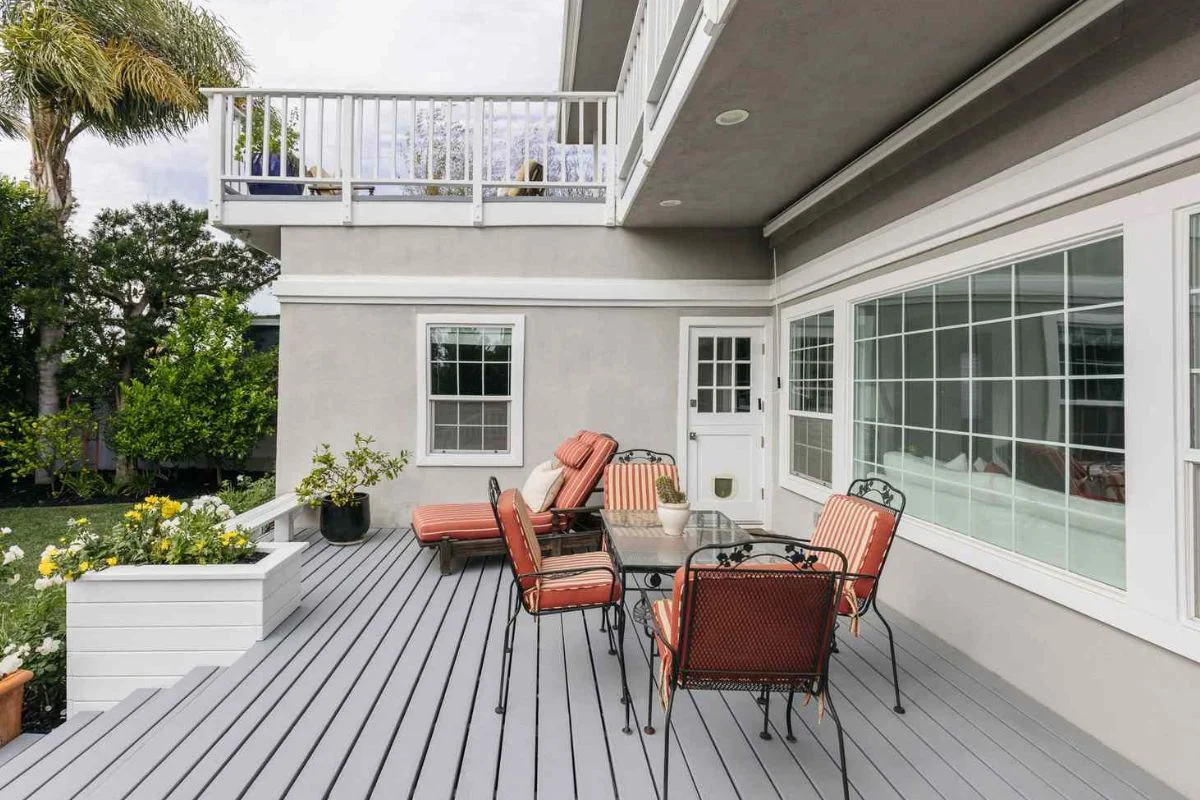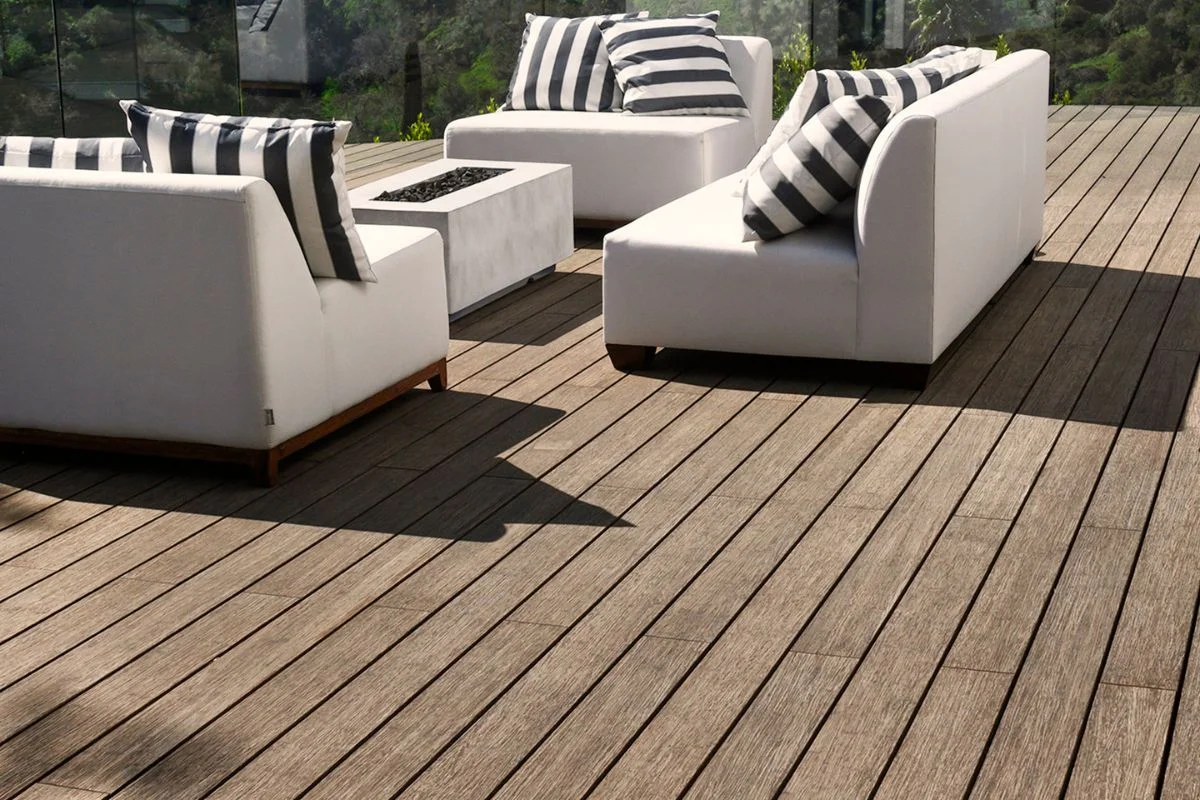Decking flooring, often synonymous with outdoor living, represents a harmonious blend of functionality and aesthetic appeal. Whether you’re envisioning a tranquil retreat in your backyard, a stylish entertainment area on your rooftop, or a welcoming space around your pool, decking flooring holds the key to unlocking the full potential of outdoor environments.
In this exploration, we delve into the beauty and benefits of decking flooring, uncovering the myriad ways it can transform outdoor spaces into inviting havens for relaxation, socialization, and enjoyment of nature. From its natural charm to its practical advantages, decking flooring offers a wealth of opportunities to enhance your outdoor living experience.
Introduce the Concept of Decking Flooring
Decking flooring embodies the essence of outdoor living, offering a seamless transition between indoor comfort and the natural world outside. This innovative flooring solution extends the boundaries of your home, transforming outdoor spaces into inviting retreats for relaxation, entertainment, and connection with nature.
Decking flooring is designed to withstand the rigors of outdoor environments, providing a durable and weather-resistant surface that enhances the functionality and aesthetics of decks, patios, balconies, and other outdoor areas. It serves as the foundation for creating inviting outdoor living spaces where friends and family can gather, unwind, and enjoy the beauty of the great outdoors.
From classic wood decking to modern composite and PVC options, decking flooring comes in a variety of materials, colors, and textures to suit every style and preference. Its versatility allows for endless design possibilities, from sleek contemporary layouts to rustic charm and everything in between.
In this exploration of decking flooring, we delve into its beauty, benefits, installation process, maintenance tips, and design inspirations. Whether you’re envisioning a cozy corner for morning coffee or a vibrant entertainment hub for weekend gatherings, decking flooring sets the stage for outdoor living at its finest. Join us as we uncover the wonders of decking flooring and discover how it can transform your outdoor spaces into havens of comfort, style, and serenity
Benefits of Decking Flooring
Decking flooring offers a myriad of benefits that elevate outdoor living spaces and enhance the overall enjoyment of your property. Here are some key advantages of decking flooring:
Enhancing Outdoor Living Spaces:
- Decking flooring creates functional and inviting outdoor areas for relaxation, dining, entertaining, and socializing.
- It extends the usable living space of your home, allowing you to make the most of your outdoor environment year-round.
Durable and Weather-Resistant:
- Decking flooring is designed to withstand harsh weather conditions, including rain, snow, UV exposure, and temperature fluctuations.
- It resists rotting, warping, splintering, and insect damage, ensuring long-lasting performance and durability.
Low Maintenance Requirements:
- Many types of decking flooring require minimal maintenance, reducing the need for frequent cleaning, staining, or sealing.
- Routine maintenance tasks typically include simple cleaning with soap and water, allowing you to spend more time enjoying your outdoor space and less time on upkeep.
Versatility in Design and Customization:
- Decking flooring comes in a wide range of materials, colors, finishes, and textures, allowing for endless design possibilities.
- Whether you prefer the classic warmth of wood, the sleek look of composite materials, or the durability of PVC, there’s a decking option to suit your style and aesthetic preferences.
Eco-Friendly and Sustainable:
- Many decking flooring materials are made from sustainable or recycled materials, reducing environmental impact and promoting eco-conscious living.
- Choosing decking flooring with eco-friendly credentials allows you to enjoy your outdoor space with peace of mind, knowing that you’re making a positive contribution to the environment.
Increase Property Value:
- Well-designed and properly maintained decking flooring can enhance the curb appeal and resale value of your home.
- Outdoor living spaces equipped with decking flooring are attractive selling points for potential buyers, offering additional living and entertainment areas.
Types of Decking Flooring Materials
Decking flooring comes in a variety of materials, each offering unique features, benefits, and aesthetics. Understanding the characteristics of different decking materials can help you choose the best option for your outdoor space. Here are some common types of decking flooring materials:
Wood Decking:
- Cedar: Known for its natural beauty, cedar decking has a warm tone and distinctive grain patterns. It is naturally resistant to decay, rot, and insect damage.
- Redwood: Redwood decking is prized for its rich color variations and durability. It contains natural oils that make it resistant to decay and insect infestation.
- Pressure-Treated Lumber: Pressure-treated lumber is treated with chemical preservatives to enhance its resistance to decay, rot, and insect damage. It is an affordable option for decking projects but may require regular maintenance and sealing.
Composite Decking:
- Composite decking is made from a blend of recycled wood fibers and plastic materials. It offers the look of wood without the maintenance requirements and is highly resistant to moisture, rot, and insect damage.
- Composite decking comes in a variety of colors, finishes, and textures, allowing for customization and design flexibility.
PVC and Vinyl Decking:
- PVC decking is made from 100% synthetic materials, including PVC resin and additives. It is highly durable, moisture-resistant, and low-maintenance, making it ideal for high-traffic areas and wet climates.
- Vinyl decking is similar to PVC decking but is typically made from polyvinyl chloride (PVC) and may contain additional additives for enhanced durability and UV resistance.
Aluminum Decking:
- Aluminum decking is lightweight, durable, and resistant to rust, corrosion, and rot. It is an ideal choice for coastal areas and environments with high humidity or salt exposure.
- Aluminum decking is available in a variety of colors and finishes, including wood grain textures, to mimic the look of traditional wood decking.
Bamboo Decking:
- Bamboo decking is made from fast-growing bamboo grass, making it a sustainable and eco-friendly option for decking projects.
- Bamboo decking is highly durable, insect-resistant, and naturally moisture-resistant, making it suitable for outdoor use in various climates.
Recycled Plastic Decking:
- Recycled plastic decking is made from recycled plastic materials, such as high-density polyethylene (HDPE) or polypropylene (PP).
- It is highly durable, resistant to moisture, rot, and insect damage, and requires minimal maintenance.
Installation Process of Decking Flooring
Installing decking flooring requires careful planning, preparation, and attention to detail to ensure a durable and attractive outdoor living space. Here’s a step-by-step guide to the installation process:
Preparing the Outdoor Space:
- Clear the area where the decking will be installed, removing any vegetation, debris, or obstacles.
- Ensure that the ground is level and compacted to provide a stable foundation for the decking structure.
- Consider installing a weed barrier or landscape fabric to prevent weed growth beneath the decking.
Planning and Design Layout:
- Determine the layout and orientation of the decking boards, taking into account factors such as sunlight exposure, traffic flow, and aesthetic preferences.
- Calculate the required materials, including decking boards, support joists, fasteners, and accessories, based on the dimensions of the outdoor space.
Installing Support Joists:
- Begin by installing support joists or framing beams to create a sturdy substructure for the decking.
- Space the joists according to manufacturer recommendations, typically 16 to 24 inches apart, and use joist hangers or screws to secure them to the ledger board or beams.
Placing Decking Boards:
- Start laying the decking boards perpendicular to the support joists, starting from one end of the decking area.
- Leave a small gap between each board to allow for expansion and contraction due to temperature changes and humidity.
- Use corrosion-resistant screws or hidden fasteners to secure the decking boards to the joists, ensuring even spacing and alignment.
Cutting and Trimming:
- Use a circular saw or miter saw to cut decking boards to the desired length and shape as needed to fit around obstacles, corners, and edges.
- Take care to measure and cut accurately to achieve clean and professional-looking results.
Finishing Touches:
- Install fascia boards or trim pieces along the edges of the decking to provide a finished appearance and conceal the exposed ends of the boards.
- Consider adding decorative elements such as railing systems, lighting, and outdoor furniture to enhance the functionality and aesthetics of the outdoor space.
Sealing and Protecting:
- Apply a high-quality sealant or finish to the decking boards to protect them from moisture, UV rays, and general wear and tear.
- Follow manufacturer recommendations for sealing and maintenance to ensure long-term durability and performance of the decking flooring.
Inspecting and Maintaining:
- Regularly inspect the decking for signs of damage, rot, or deterioration, and make any necessary repairs or replacements promptly.
- Clean the decking periodically with mild soap and water to remove dirt, stains, and debris, and reapply sealant as needed to maintain its appearance and integrity.
Maintenance Tips for Decking Flooring
Proper maintenance is essential to keep your decking flooring looking beautiful and performing well over time. Here are some maintenance tips to help you preserve the integrity and appearance of your decking flooring:
Regular Cleaning:
- Sweep or use a leaf blower to remove debris, leaves, and dirt from the surface of the decking regularly.
- Hose down the decking with water and use a mild soap solution to clean stubborn stains, mold, or mildew as needed.
Preventing Mold and Mildew:
- Keep the decking area clear of leaves, branches, and other organic matter that can trap moisture and promote mold and mildew growth.
- Ensure adequate ventilation and airflow around the decking to prevent moisture buildup and reduce the risk of mold and mildew.
Stain Removal:
- Promptly clean up spills and stains, such as food, grease, or oil, to prevent them from penetrating the decking surface and becoming permanent.
- Use a gentle cleaner specifically formulated for decking materials and follow manufacturer recommendations for stain removal.
Inspecting for Damage:
- Regularly inspect the decking boards, support joists, and fasteners for signs of damage, rot, or deterioration.
- Replace any damaged or rotting boards, tighten loose fasteners, and reinforce support joists as needed to maintain structural integrity.
Protecting Against UV Damage:
- Apply a UV-resistant sealant or stain to the decking boards to protect them from sun damage, fading, and discoloration.
- Reapply sealant or stain annually or as recommended by the manufacturer to maintain UV protection and enhance the longevity of the decking.
Winter Maintenance:
- Remove snow and ice from the decking surface using a plastic shovel or broom to prevent accumulation and minimize the risk of damage.
- Avoid using metal shovels or ice melt products containing harsh chemicals, as they can scratch or corrode the decking material.
Avoiding Abrasive Cleaners:
- Avoid using abrasive cleaners, brushes, or pressure washers that can damage the surface of the decking and strip away protective finishes.
- Use gentle cleaning methods and non-abrasive tools to preserve the integrity and appearance of the decking flooring.
Regular Maintenance Schedule:
- Establish a regular maintenance schedule to inspect, clean, and maintain the decking flooring throughout the year.
- Keep records of maintenance activities, including cleaning, repairs, and sealant applications, to ensure consistent upkeep and prolong the life of the decking.
Conclusion
In conclusion, decking flooring offers a versatile and attractive solution for enhancing outdoor living spaces, providing a durable and aesthetically pleasing surface for relaxation, entertainment, and enjoyment of the natural surroundings. From its diverse range of materials and design options to its low maintenance requirements and long-term durability, decking flooring presents countless benefits for homeowners and property owners alike.








